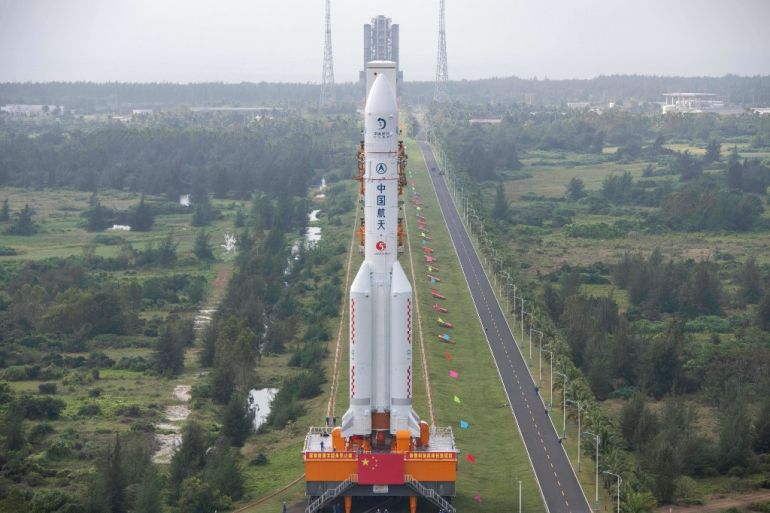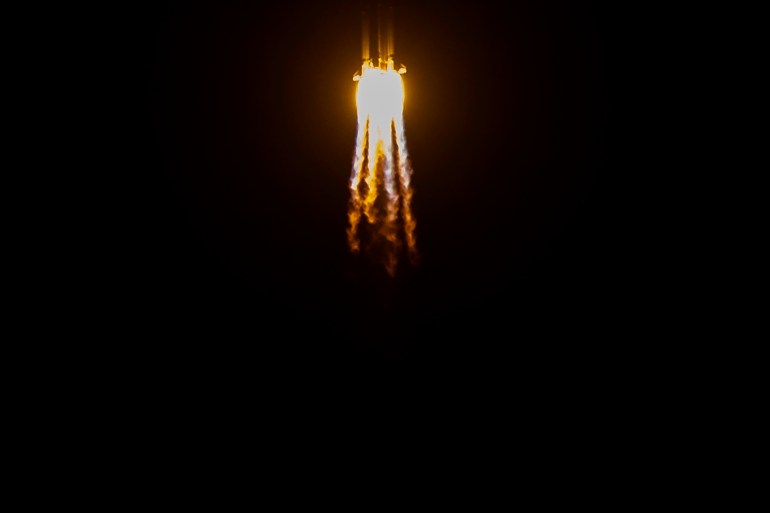China’s ‘space dream’ in 500 words

China’s launch of an uncrewed spacecraft aimed at bringing back lunar rocks underlines just how far the country has come in achieving its “space dream”.
Beijing has poured billions of dollars into its military-run space programme with hopes of having a crewed space station by 2022 and of eventually sending humans to the moon.
Keep reading
list of 4 itemsChina prepares moon probe to bring back lunar rocks
‘Five Eyes’ group slams China crackdown on Hong Kong legislators
China accuses ‘dangerous’ US of ‘creating chaos’ in Asia
Here is a look at China’s space efforts through the decades:
Mao’s pledge
Soon after the Soviet Union launched Sputnik in 1957, Chairman Mao Zedong pronounced “we too will make satellites”.
It took more than 10 years, but in 1970, China’s first satellite lifted into space on the back of a Long March rocket.
Human space flight took decades longer, with Yang Liwei becoming China’s first astronaut to go into space in 2003.
As the launch approached, concerns over the viability of the mission caused Beijing to cancel a nationwide live television broadcast at the last minute.
Despite the fears, the launch went off smoothly, with Yang orbiting the Earth 14 times during his 21-hour flight on board the Shenzhou 5.
Since then, China has sent men and women into space with increasing regularity.

Space station
Following in the footsteps of the United States and Russia, China is striving to open a space station circling our planet.
The Tiangong-1 was shot into orbit in September 2011.
In 2016, China launched its second station, the Tiangong-2 lab into orbit 393km (244 miles) above Earth, in what analysts say will likely serve as a final building block before China launches a crewed space station.
Astronauts who have visited the station have run experiments on growing rice and other plants, as well as docking spacecraft.
‘Space dream’
Under President Xi Jinping, plans for China’s “space dream”, as he calls it, have been put into overdrive.
The new superpower is looking to finally catch up with the US and Russia after years of belatedly matching their space milestones.
The ambitions start with a space station of its own – China was deliberately left out of the International Space Station effort – with the assembly of pieces in space expected to start this year and crewed use to begin in 2022.
China is also planning to build a base on the moon with the country aiming to establish a lunar mission by 2029.
But lunar work was dealt a setback in 2017 when the Long March-5 Y2, a powerful heavy-lift rocket, failed to launch on a mission to send communication satellites into orbit.
The failure forced the postponement of the launch of Chang’e-5, which was originally scheduled to collect moon samples in the second half of 2017.
Another robot, the Chang’e-4, landed on the far side of the moon in January 2019 – an historic first.
China’s astronauts and scientists have also talked up crewed missions to Mars as Beijing strives to become a global space power.